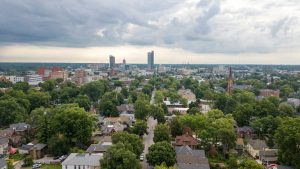Sustainable Real Estate Practices: Green Building and Energy Efficiency
Sustainable real estate practices have become increasingly important in recent years as a way to not only reduce environmental impact, but also save money and increase property values. One of the most impactful ways to incorporate sustainability into real estate is through green building and energy efficiency. These two practices can significantly reduce a building’s carbon footprint and energy consumption while also providing a healthier and more comfortable living or working environment. In this article, we’ll dive into the benefits and strategies of integrating green building and energy efficiency into real estate development.
The Benefits of Green Building and Energy Efficiency
Green building and energy efficiency initiatives have numerous benefits for both property owners and occupants. From a financial perspective, these practices can lead to long-term cost savings by reducing energy and water consumption. They can also increase property value and attract more buyers or tenants who are interested in sustainability. On top of the financial benefits, green buildings also have significant environmental and societal impacts. They reduce energy consumption and carbon emissions, helping to combat climate change and improve overall air quality. In addition, occupants of green buildings often experience better indoor air quality and overall health due to the use of non-toxic materials and efficient ventilation systems.
Green Building Strategies
Green building strategies involve designing and constructing buildings with sustainability in mind. This can include using sustainable and recycled materials, implementing energy-efficient heating and cooling systems, and installing water-saving fixtures. Another important aspect of green building is incorporating renewable energy sources, such as solar panels, to generate clean and renewable electricity. Additionally, proper insulation and sealing can help reduce the need for heating and cooling and improve indoor air quality. These strategies not only benefit the environment but also result in significant cost savings for property owners.
Energy Efficiency in Real Estate
Energy efficiency goes hand in hand with green building and is crucial for reducing a building’s carbon footprint. One of the most effective ways to improve energy efficiency is through the use of smart technology. Smart thermostats and lighting systems can automatically adjust energy usage based on occupancy and time of day. This helps to reduce wasted energy and lower utility costs. Property owners can also consider installing energy-efficient windows and upgrading to energy-efficient appliances to further reduce energy consumption.
Certifications and Incentives
Incorporating green building and energy efficiency into real estate can also come with added benefits in the form of certifications and incentives. Certifications, such as LEED (Leadership in Energy and Environmental Design) and ENERGY STAR, recognize buildings that have implemented sustainable practices and achieved high levels of energy efficiency. These certifications not only provide validation of a property’s sustainability efforts but can also attract potential buyers or tenants who prioritize environmental responsibility. Additionally, there are various federal, state, and local incentives available for property owners who adopt green building and energy efficiency practices. These can include tax credits, grants, and other financial incentives.
The Future of Sustainable Real Estate
As the effects of climate change become more apparent, the demand for sustainable real estate practices will only continue to grow. Governments and organizations are putting more emphasis on reducing carbon emissions and promoting sustainability, making it crucial for the real estate industry to adapt. Property owners who embrace green building and energy efficiency will not only contribute to a healthier environment but will also reap financial benefits and gain a competitive edge in the real estate market. As a result, the future of sustainable real estate looks bright and promising.
In conclusion, green building and energy efficiency are essential components of sustainable real estate practices that provide numerous benefits for both the environment and property owners. By incorporating these strategies, real estate can become a powerful force in mitigating climate change, improving indoor air quality, and promoting a healthier and more sustainable future for all.









